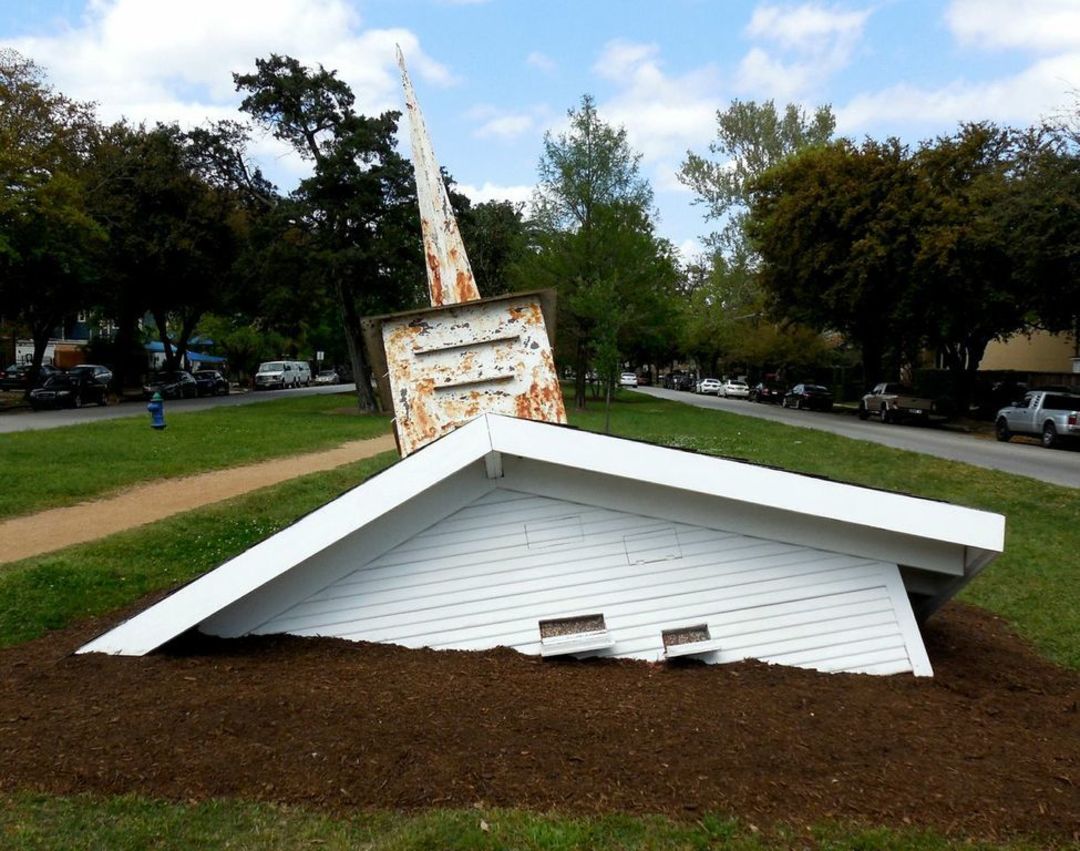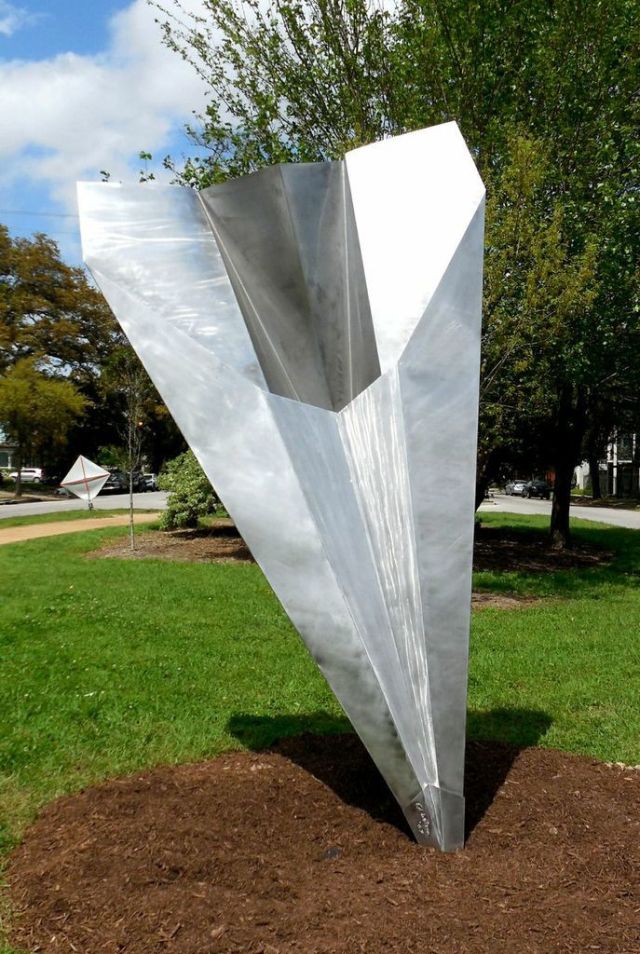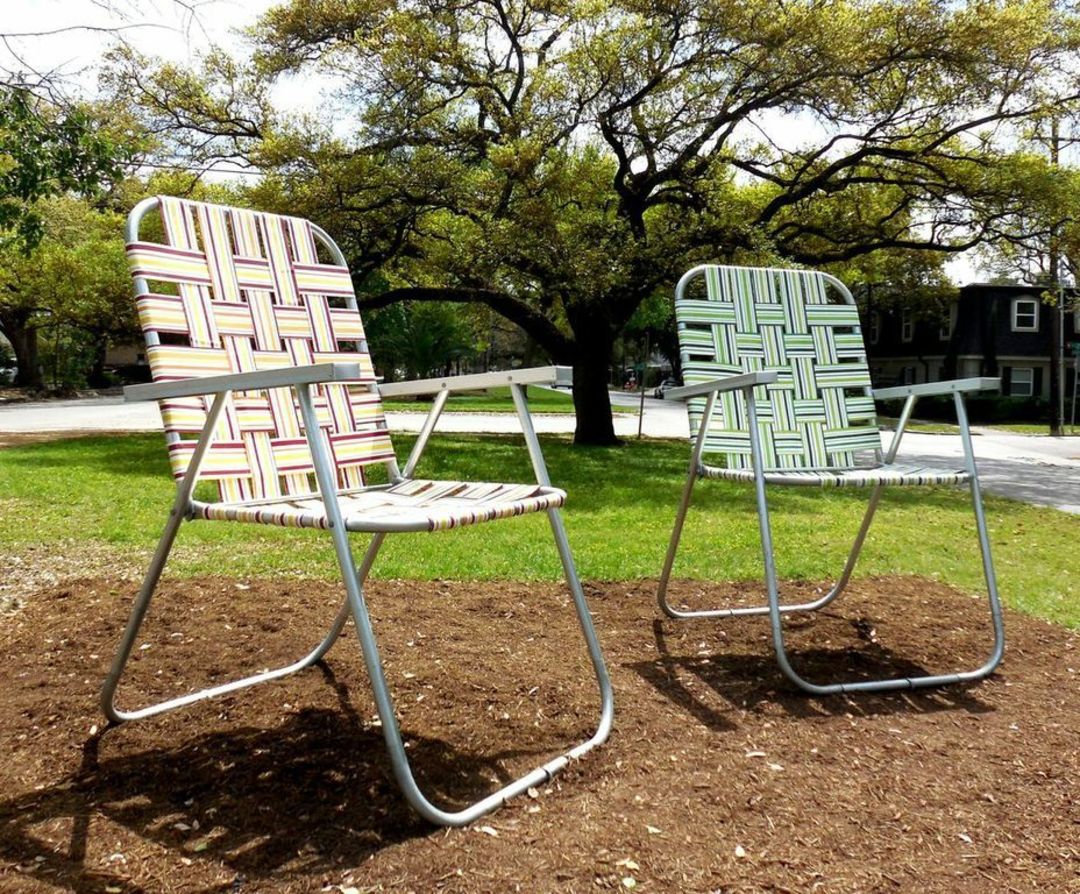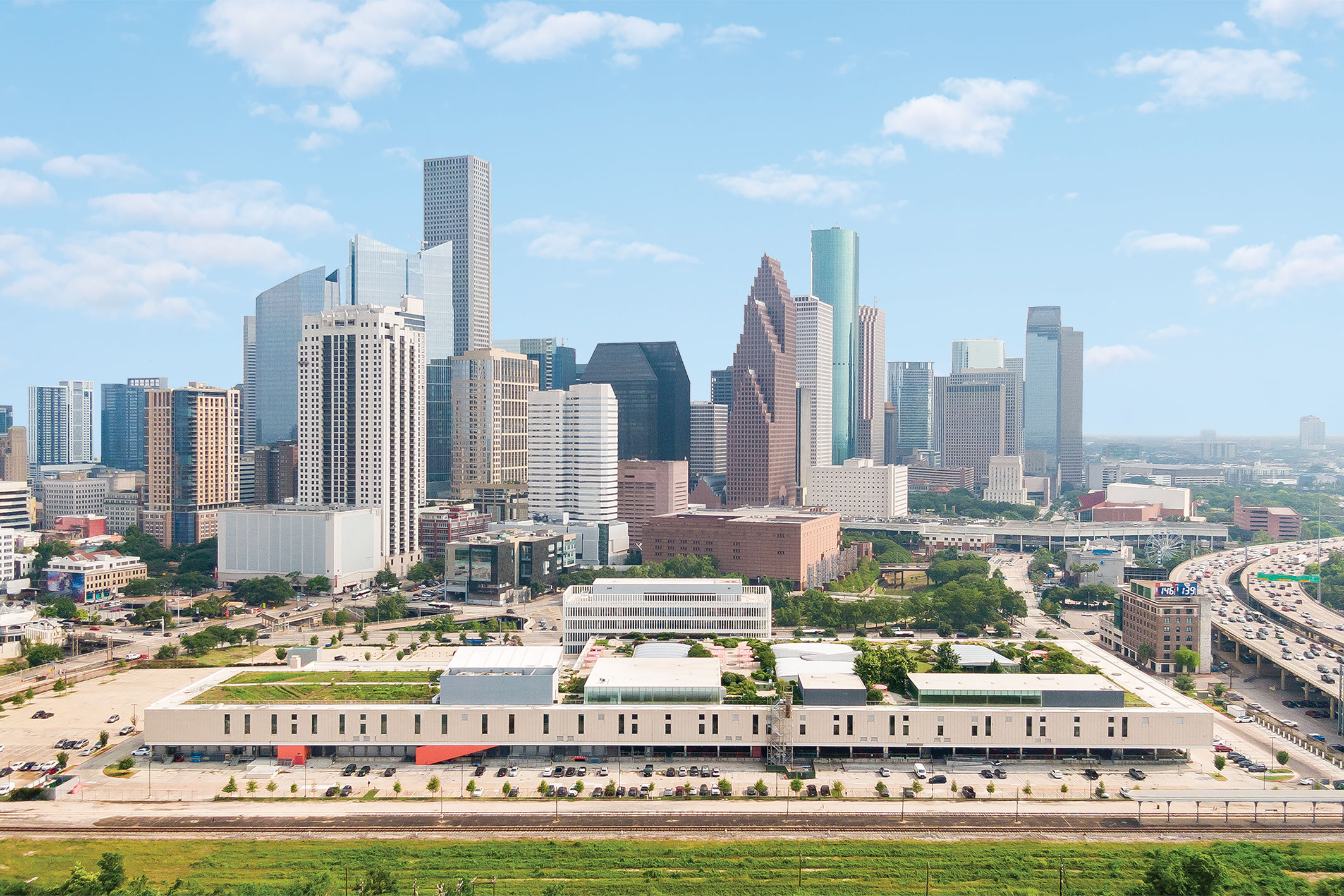Like the New Sculptures on Heights Blvd? They're For Sale.

Dan Havel, "Wildlife Sanctuary" (2004/2014)
Image: Courtesy of Gus Kopriva
Last week, a driver tooling down Heights Boulevard might have noticed two men building what looked like the upper part of a house in the middle of the street’s wide, shady esplanade. From a passing car, it would have looked like the house was either rising from the ground or sinking into it, with only its gables visible above the brown mulch. The men, Houston artist Dan Havel and his assistant Mike Roberts, were in the process of installing “Wildlife Sanctuary,” one of eight sculptures on display beginning this week through Nov. 4 along Heights Boulevard, all of which are for sale—for prices ranging from $5,000 to $28,000, with all the proceeds going to the artists—after the pieces come down this fall.

Ed Wilson, "Folded Plane" (2007)
Image: Courtesy of Gus Kopriva
The series of temporary sculptures, most by artists based in the Heights, was the brainchild of Gus Kopriva, longtime owner of Redbud Gallery on 11th St and Courtlandt St in the Heights. It took several years for him to get permission for the project from the Houston Parks and Recreation Department (the Heights esplanade is public land) and the Department of Public Works and Engineering (to make sure the installations wouldn’t hit any underground pipes). Finally, the Houston Heights Association—which has an uneven track record with public art—voted unanimously to give Kopriva and his co-curator, Chris Silkwood, approval to go ahead with the installations. Grants from the Mayor’s Office and the Houston Arts Alliance helped Kopriva pay the artists’ fees.
The title of the series, True North, was inspired by the Omaha Land and Trust Company’s 19th century prospectuses for the master-planned Heights, brochures that highlighted the community’s north-south streets.

Paul Kittelson, "Lawn Chairs" (2014)
Image: Courtesy of Gus Kopriva
“My dream is to put these up all over the city—there’s some great streets here that also have esplanades,” Kopriva told me. “This is kind of a prototype to see how it goes, whether there’s any vandalism.” Kopriva may be thinking of the destruction, last summer, of a colorful “yarn-bombing” installation also on the Heights esplanade.
Dan Havel’s finished installation is topped by a 12-foot spire, which the artist purchased at a church yard sale for $50, and includes two large bird feeders that give the work its title. Havel, who lives on 24th Street in the Heights, said that, like Kopriva, he wasn’t sure how it would be received: “I present something to them, and I let the audience do what it wants,” he told me, wiping his gardening gloves on his jeans.
Havel is perhaps best known as the co-creator, with Dean Ruck, of 2005’s “Inversion,” which turned an abandoned house along Montrose Boulevard owned by the Art League of Houston into a giant work of art by tearing off the house’s façade and using the wood to create what looked like a giant funnel running through the building. From the street, it looked like someone had shot a cannon through the house; the dramatic piece snarled Montrose traffic with rubberneckers for months.

Dean Ruck, "Ourglass" (1999/2014)
Image: Gus Kopriva
About 10 blocks north of Havel’s sinking chapel on the Heights esplanade, Ruck has his own sculpture, a lovely 15-foot-high piece shaped like an exclamation mark and covered with dozens of small vanity mirrors ($20,000). Spread out between the two pieces are other curiosities—two oversized lawn chairs by Paul Kittelson ($5,000 each); a giant piece of sheet metal folded to look like a paper airplane sticking nose first into the ground ($12,000); and a Brobdingnagian dog covered in scraps of fake fur, leather, and plastic tarp ($9,500).
The two works currently attracting the most attention, according to Kopriva, are Havel’s “Wildlife Sanctuary” ($8,500) and Kittelson’s lawn chairs, which have already become magnets for children and photographers. Kopriva is planning to install signs warning people not to climb the chairs, although he said the artist himself was fine with it.
“You cannot keep people off the lawn chairs,” Kopriva admitted with a sigh. “But, at least for liability reasons, I want to put the signs out.”




